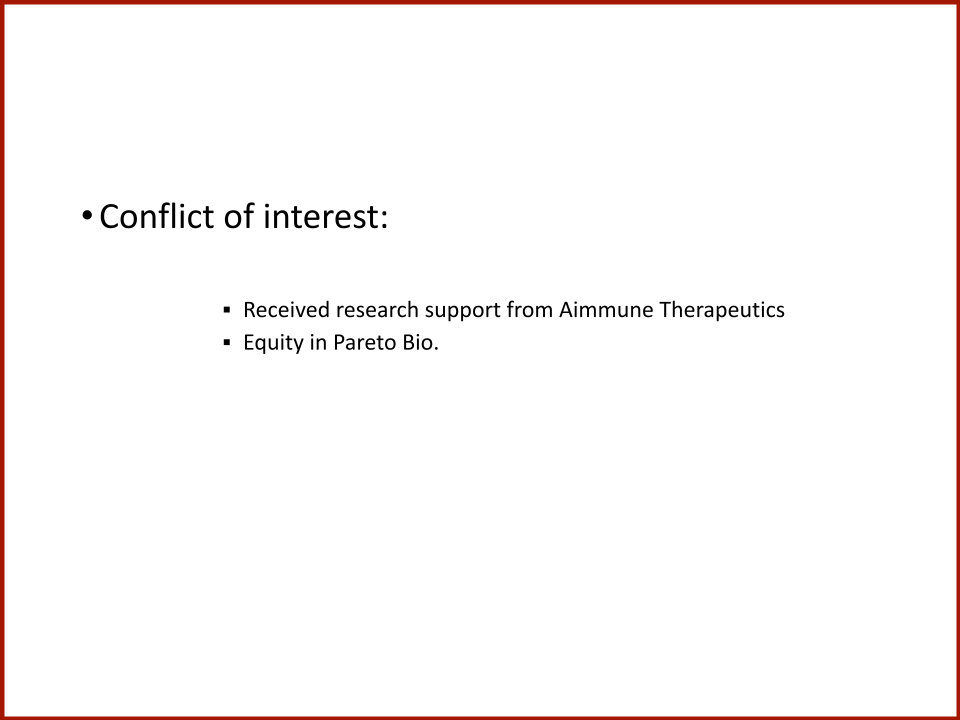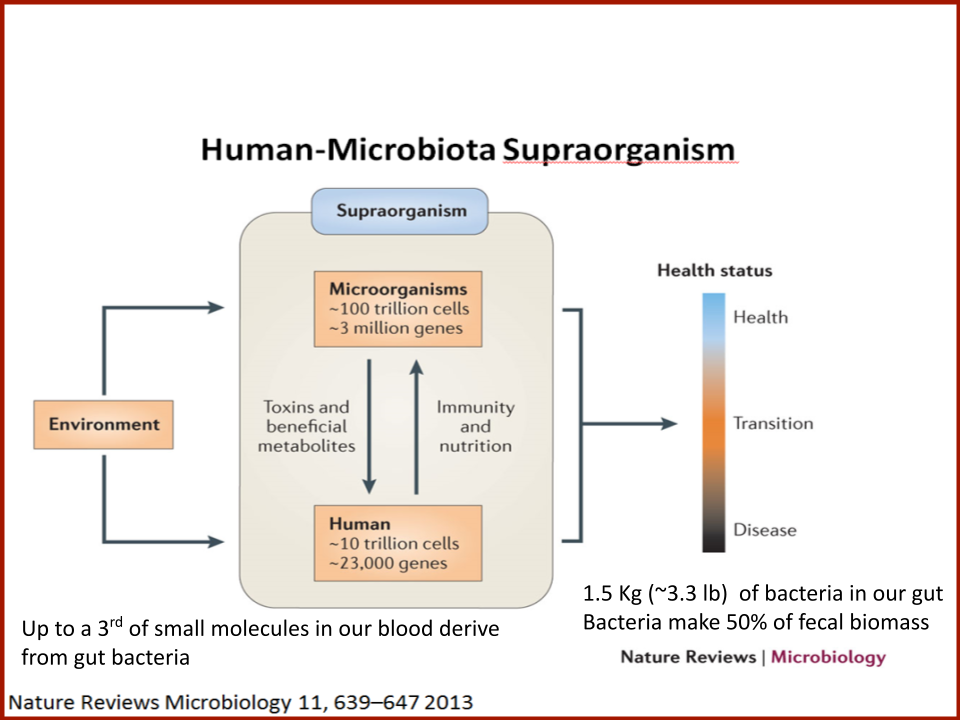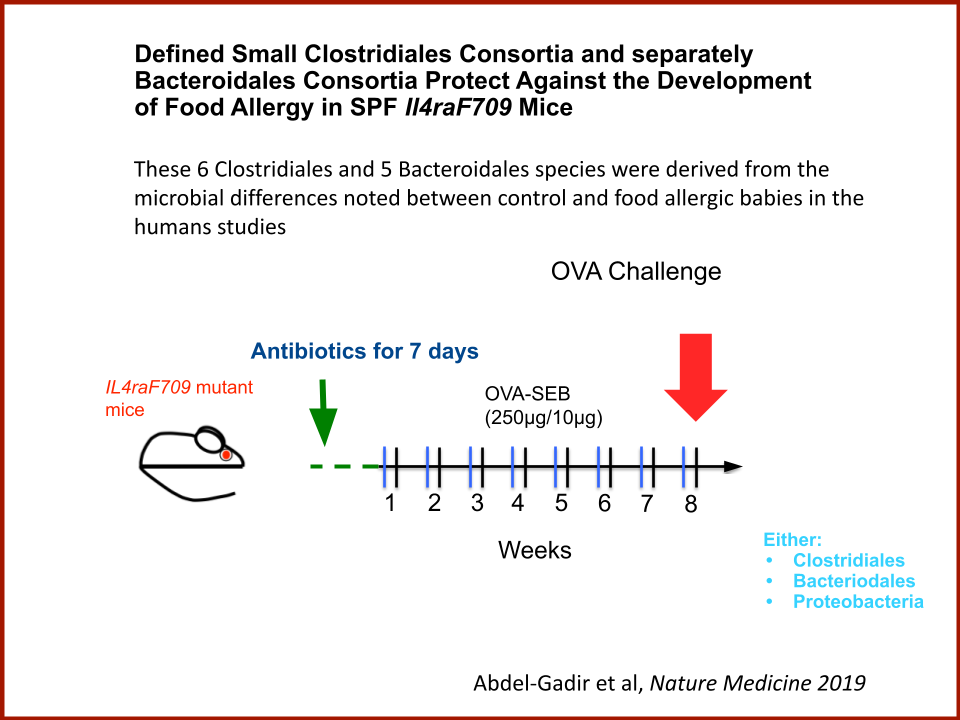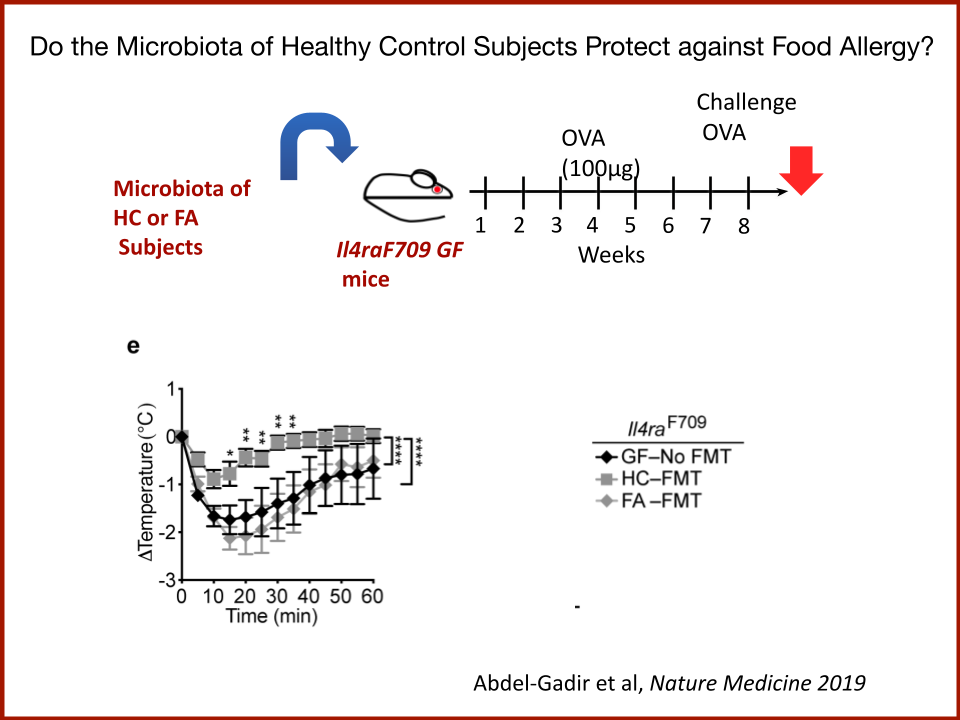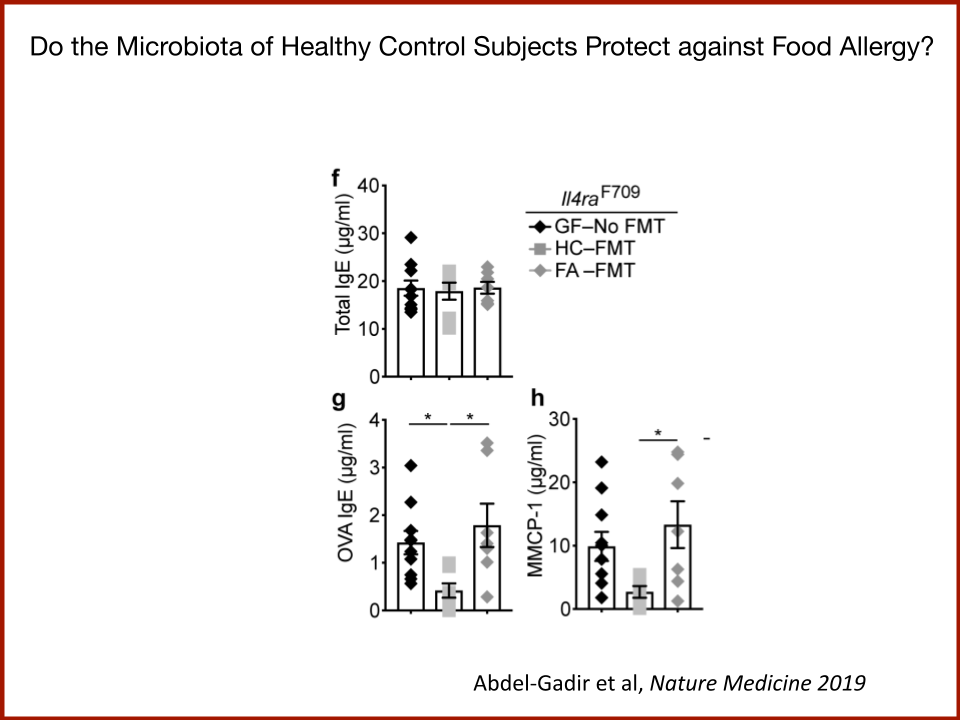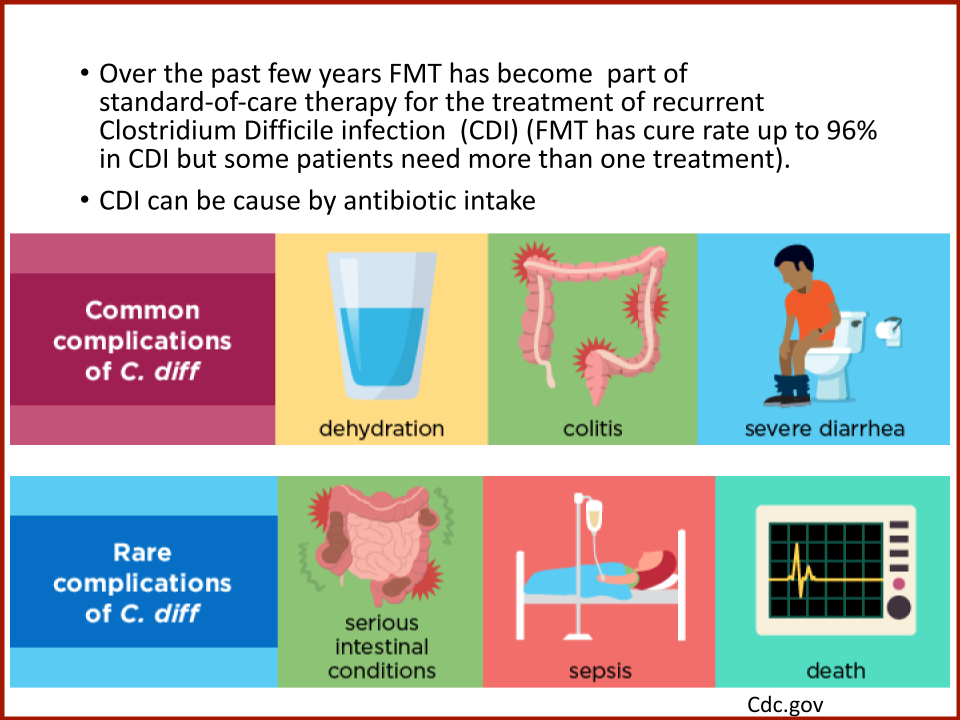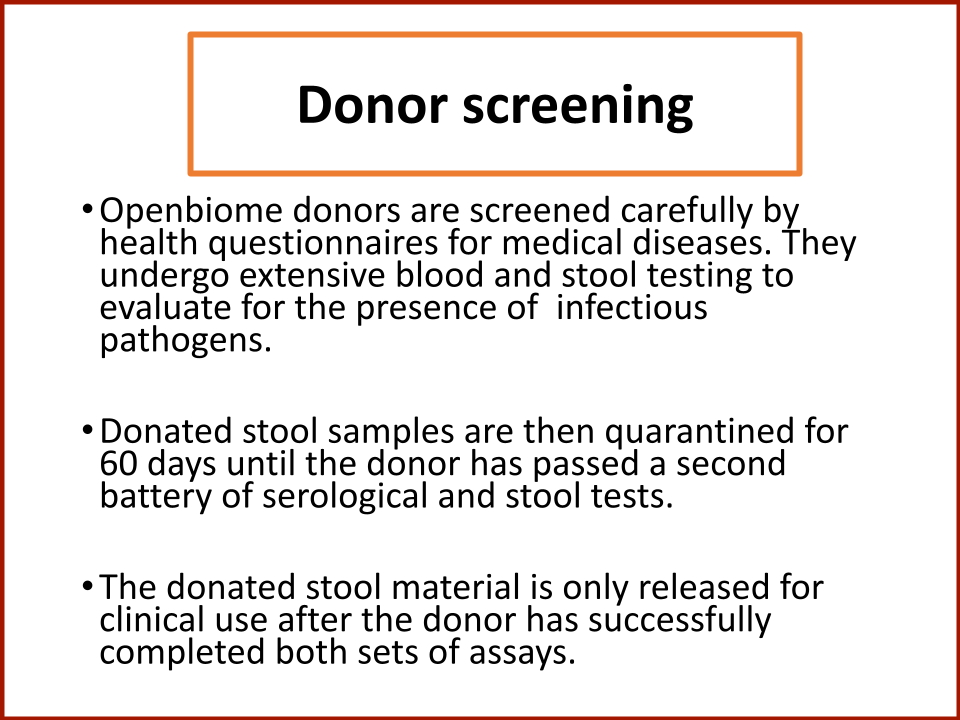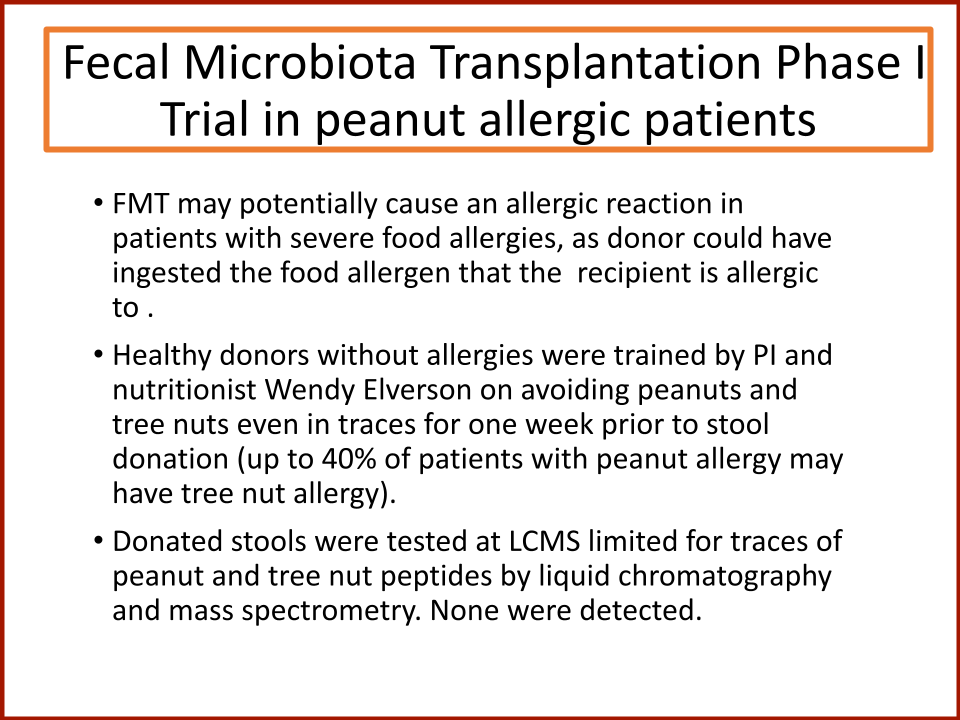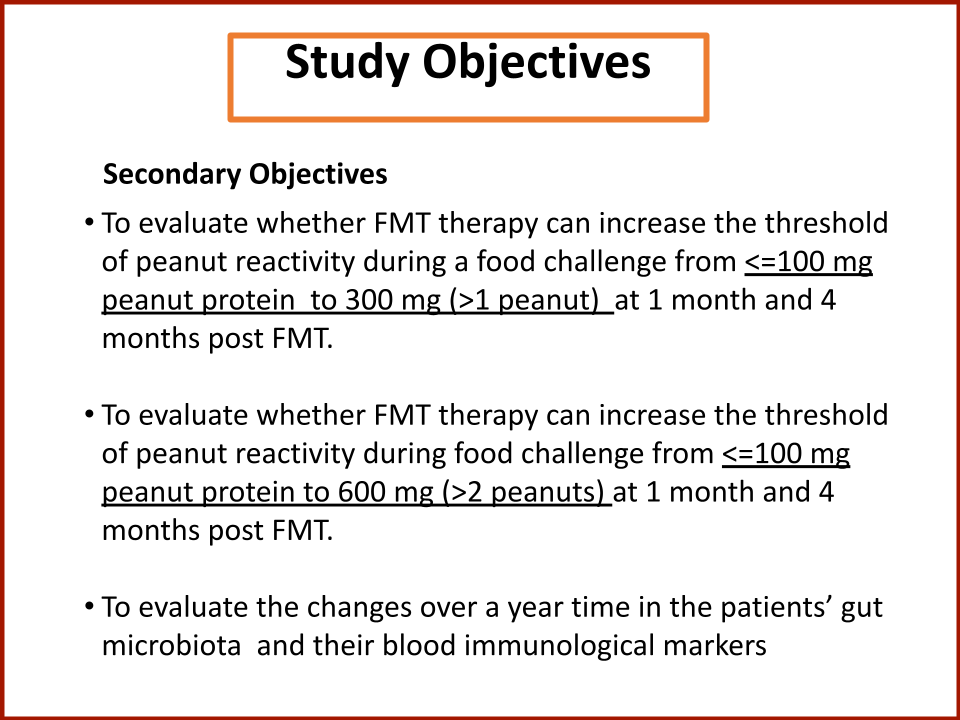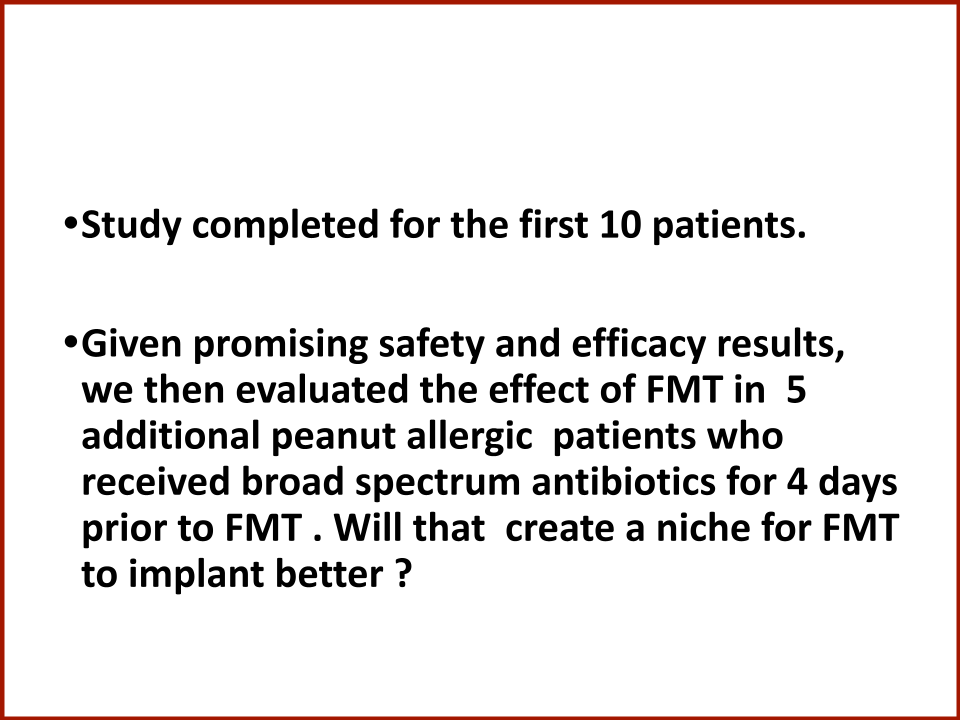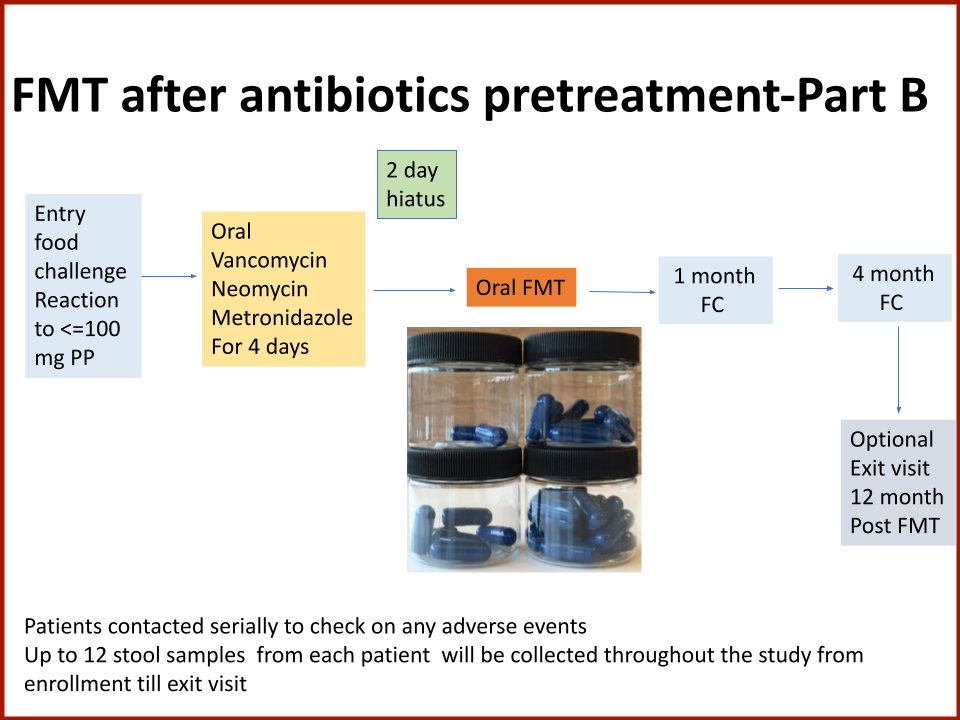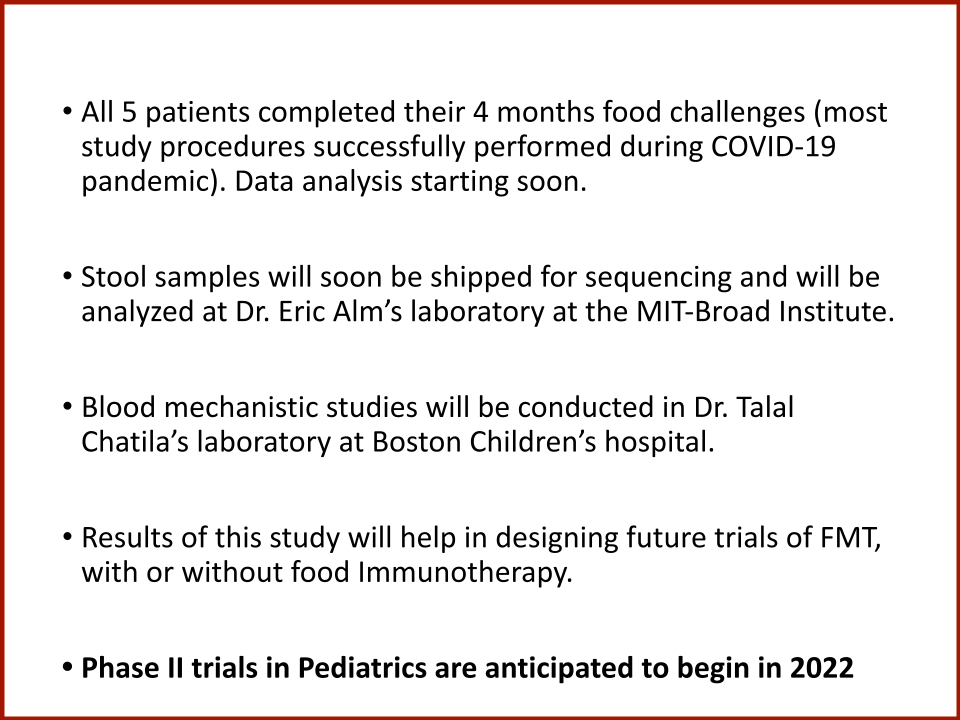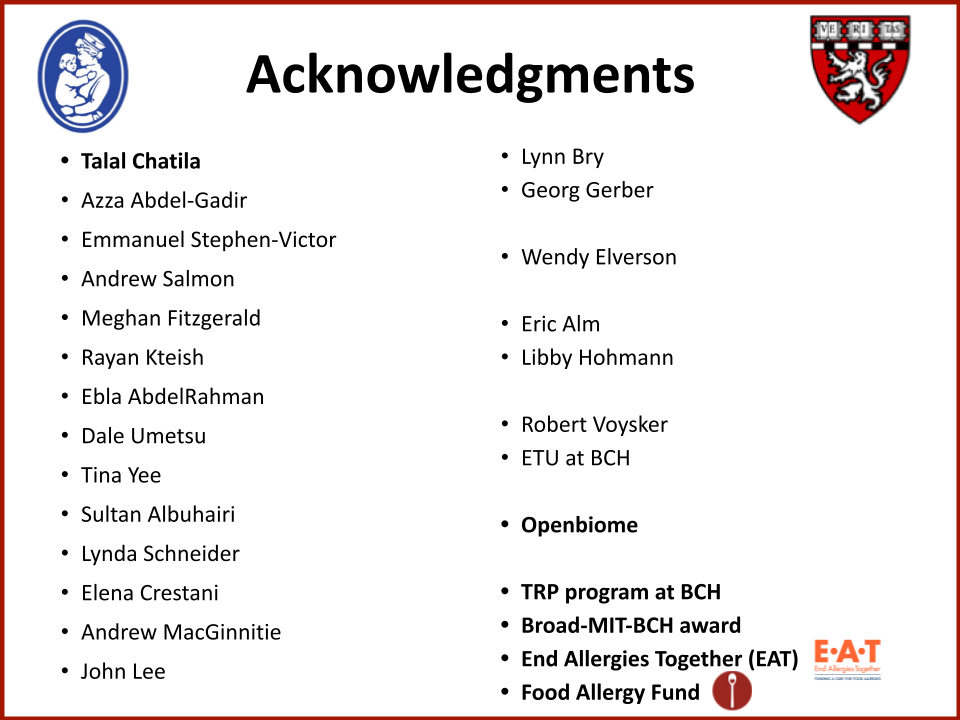Metabolomic and Metagenomic Insights into FMT Response in Food Allergy
Funded by the Food Allergy Fund
Dr. Rima Rachid and Dr. Talal Chatila of Boston Children’s Hospital as Principal Investigators
We found that FMT increases the threshold dose at which a subset of patients reacts to peanut. These patients were initially reacting to traces of peanut and their threshold dose when up to 2.5- 3 peanuts, after one FMT only. This improvement lasted at least 4 months.
We then performed a fecal transplant in mice that are highly prone food anaphylaxis. In the mice that received the human stools from responders’ patients prior to FMT, there was no protection from anaphylaxis. In the mice that received the human stools post FMT, there was strong protection from anaphylaxis. This was not observed when we used the stools of non responders’s patients.
The protection in the mice was accompanied by a very strong increase (1000 fold) in the abundance of Bacteroidales species in the stools. We have found before (Nature Medicine 2019) that Bacteroidales are protective against food allergy. We also found that there is a metabolomic signal in the human patients and the mice that responded, suggesting that the bile acid metabolites are critical for the protective response. When using a Bacteroidales strain that does not metabolize bile acid, we did not find any protection from anaphylaxis in mice.
We then performed a fecal transplant in mice that are highly prone food anaphylaxis. In the mice that received the human stools from responders’ patients prior to FMT, there was no protection from anaphylaxis. In the mice that received the human stools post FMT, there was strong protection from anaphylaxis. This was not observed when we used the stools of non responders’s patients.
The protection in the mice was accompanied by a very strong increase (1000 fold) in the abundance of Bacteroidales species in the stools. We have found before (Nature Medicine 2019) that Bacteroidales are protective against food allergy. We also found that there is a metabolomic signal in the human patients and the mice that responded, suggesting that the bile acid metabolites are critical for the protective response. When using a Bacteroidales strain that does not metabolize bile acid, we did not find any protection from anaphylaxis in mice.
Scroll Down to Click Through Slides

